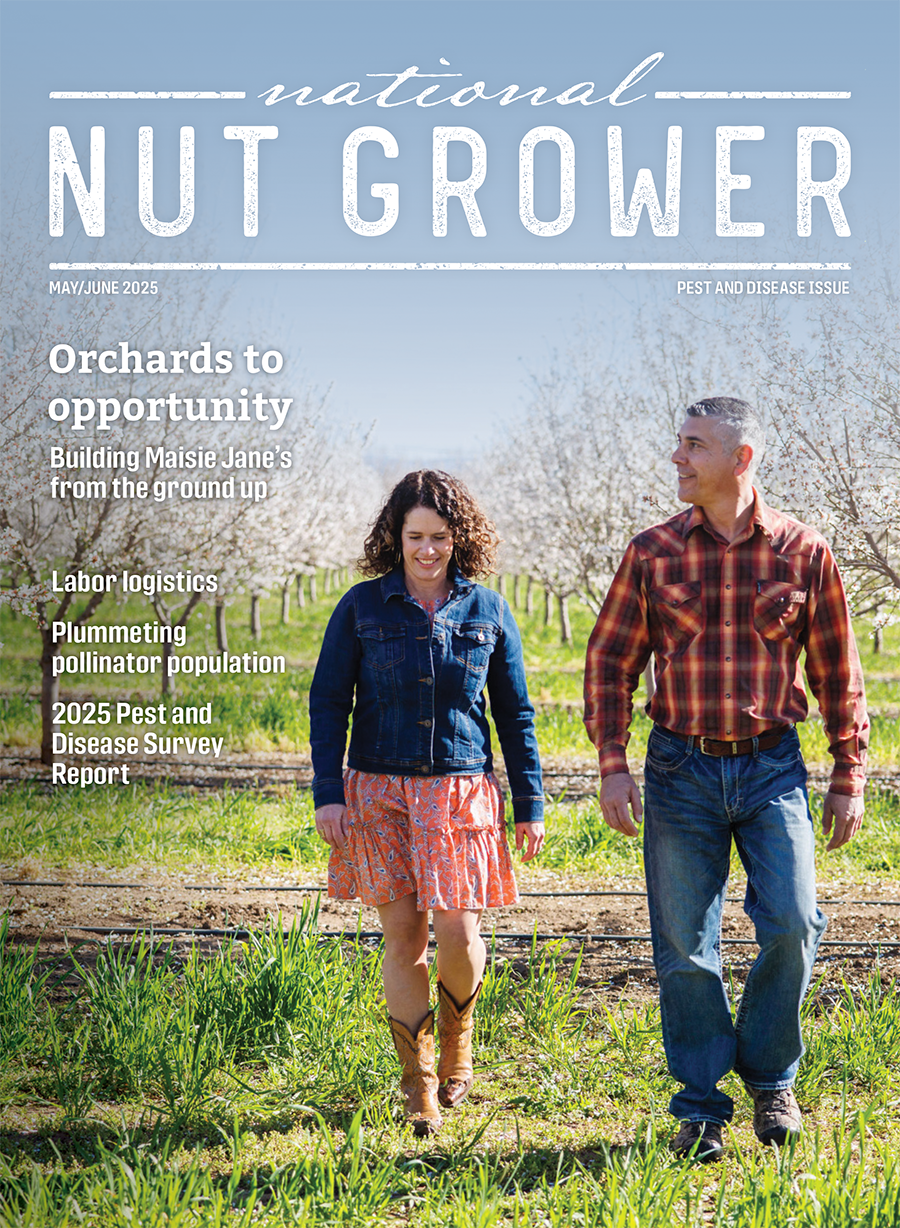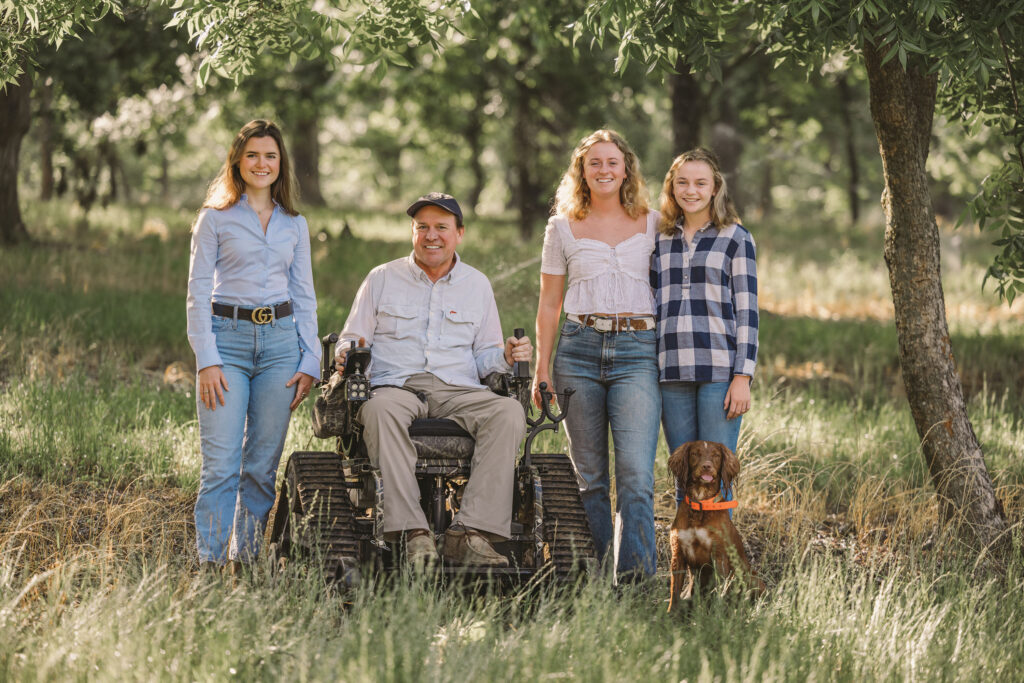
March/April 2023
Regenerative Farming
Francis “Putt” Putney Wetherbee III, a fifth-generation pecan farmer and president of his family-owned companies, is shaking up pecan farming by embracing regenerative practices, but not because he’s out to save the world. All he really wanted to do was save money by growing more pecans with fewer inputs.
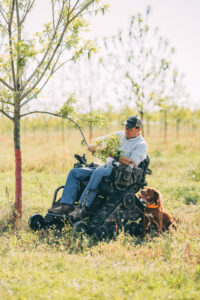
This was after his father tried to save him from the challenging love-hate relationship of farming pecans, in a time when the market dried up and he sought out other career opportunities.
Growing up, Putt would be in the fields with his dad before he was even old enough to go to school. His father had the second mechanical harvester in the state of Georgia, and when his father drove the equipment, Putt rode in the little buggy in the back. In his very early years, around age 5 or so, he had a job: to keep the thermos and lunchbox that his mom packed his father every day from getting buried in the pecans. Putt also loved the whir and bustle of the cleaning plant. He was enamored with pecan harvesting.
“We still had a lot of hand labor back then. All the people and the equipment moving around, it was just a dream world, and I loved every bit of it,” said Putt.
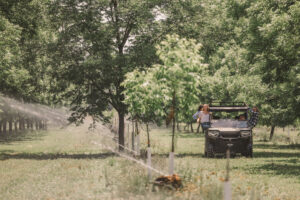
But the shiny dream came to a halt when he was getting ready to graduate college: His father invited him to not return home.
“One, he wanted me to go get some world experience. Two, things were in such bad shape for pecans that I just don’t think he thought there was much of a future in it for me at the time,” Putt said.
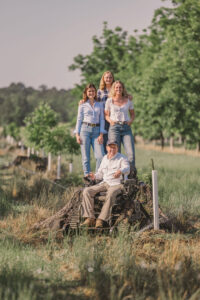
Putt had several careers, including his corporate foray that served as his final stretch outside of the family’s pecan business, Schermer Pecans, before returning in 2009.
It was not an easy return. Putt’s father was certain that the situation wasn’t going to work, and Putt was commuting from Jacksonville, Florida, to Albany, Georgia, where he stayed multiple days a week until harvest, when he stayed full time.
This lasted for three years, until Putt was able to move his family much closer to the farm where he worked under Tom Stevenson, who managed all aspects of the operation, and who remains a very well-respected member of the pecan community to this day.
“We were doing a great job in my eyes,” said Putt, “but there were newer things that got my attention. Once I started trying them, I saw that they worked. So I got permission to do a little bit more experimenting.”
Putt took over operations in 2014.
What’s making it all happen
“Production has not improved significantly or consistently in this industry since about 1987. And we’ve got newer and bigger problems that seem to creep up every five years, and this crop has only gotten more expensive to grow,” Putt said. “But there hasn’t been significantly more output, and that’s what I kept scratching my head about. How can we improve?”
When Putt started on the farm, the cation exchange capacity (CEC) was 4.6. The farm average is now close to 11, with some fields as high as 18.
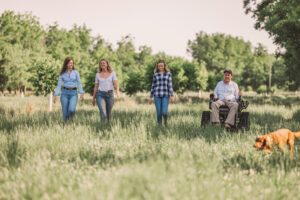
One practice is the use of ash from a biomass energy plant, which is high in phosphorus, potassium, iron, calcium, and significant sources of sulfur and magnesium, and delivers a boost to the pH.
It gives the microbes in the soil a trade, if viewing the symbiotic relationship of plants and microbes as an economy.
“Think of it as currency,” said Putt. “If you think of all the exudates that are made during photosynthesis that the plant sends down in the form of carbon sugars as money, then the bacteria and the fungi in the soil have something to exchange, so the soil gets very rich.”
Chicken litter is also applied to the orchard. Though it’s priced based on nitrogen content, that amount of nitrogen isn’t necessarily being used by the plant. It does, however, do quite a bit for the organic makeup of the soil, and when combined with clover, really enhances the health and vitality of the soil.
These regenerative practices are used on 1,500 productive acres and will be applied to another 2,500 acres that are currently being converted from pine to pecan. The family operates a nursery,
a cleaning plant and a retail business under Schermer Pecans.
“Regenerative farming — it was something that was very incremental,” Putt said. “It was an interesting journey that didn’t have any logical path to it.”
Putt and his team always knew that clover was good for nitrogen in the orchard, though they didn’t necessarily understand why. They figured legumes were good for nitrogen, and a good stand of clover plowed into the soil would really be great.
“That was a completely incorrect way of thinking,” said Putt. “Clover’s the pump, taking atmospheric nitrogen and pumping it into the soil.” This is just one example of misunderstood plant-soil relationships.
Livestock grazing is a fundamental part of regenerative agriculture, and Putt is looking to see if he can find a fit for his orchards. But, in the meantime, he’s also confident in how far he can take his trees without it.
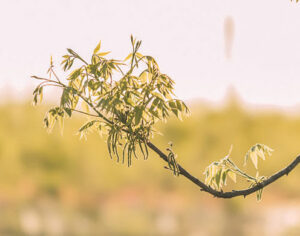
“Is my goal to be a 100% regenerative farmer? No. My goal and focus right now is as healthy of soil as I can possibly have for as much production as I can possibly have,” he said. “None of this stuff is based on theory or conjecture; it’s based on someone else’s success. And the nice component of all this is it looks like we’re going to save some money by cutting out some inputs.”
In cutting inputs, Putt is actually attempting to test his theory of loading the soils. What he means by this is increasing CECs and organic matter, using cover crops, and applying products from companies like Heliae (Phycoterra) and Redox.
He’s also trying entomopathogenic fungi like Beauveria bassiana on Cape Fear for bacterial leaf scorch. Though it can be used as a foliar and soil application, Putt opts for soil, since the beneficial fungi propagates in the soil, travels through the vascular tissue in the plant, and overtakes the bacteria that plugs the xylem and causes scorch. Though unproven, the farm saw enough positive results to continue trials.
The power of curiosity
A block planted in 2014 had a few trees that were significantly — 100% to 200% — larger than their neighboring trees. After asking his farm manager multiple times to assure they were planted at the same time (they were), Putt went out with a soil probe and pulled a sample.
Those trees had been planted over an old burn pile. The results came back with a CEC of 25. This is what led Putt to using ash applications.
“I’m particularly lucky some of the time that I have a tremendous curiosity,” Putt said.
“I think that if you can get your beneficial fungal and bacterial communities to the diversity and abundance that it needs to be, I think you can load your soils to where anything the plant might need at any time is already there,” said Putt.
Putt is a voracious reader, including resurrected manuscripts from historically silenced experts. He also is an observer. As he compiles information from outside sources and results from his own on-farm experiments, he estimates that it’ll take five years to really put everything into practice in an effective way.
Some goals in this plan are to get the CEC to 25 or above, increase organic matter by 2.5%, and get leaf brix to 9 to eliminate susceptibility to mites and aphids, grasshoppers and caterpillars. The farm is also aiming to eliminate glyphosate applications, use as few herbicides as possible and use no synthetic fertilizers. Putt understands these are lofty goals, but he also considers being halfway there a success.
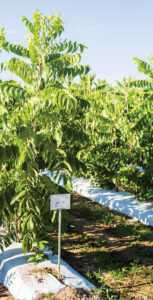
Alternate bearing…or are they?
Alternate bearing is often labeled as one of the biggest challenges of the productive cycle. In the family’s Schermer Pecans orchards, there are three varieties Curtis, Elliot and Creek — that are generally recognized as alternate bearing, but the swings are not nearly as dramatic on these farms.
“We’ve essentially pulled the alternate bearing component out of them,” he said.
Before regenerative practices, Curtis would follow its on year with only 5% to 8% of the crop. Elliot wasn’t quite as bad, but it was bad enough that growers didn’t really want to farm it. Creek will overload to a point that if it’s not fruit thinned, there won’t be a crop the following year, and the quality will decline in the year that it’s overloaded, said Putt.
“But we haven’t crop thinned a Creek in 10 years,” he said.









